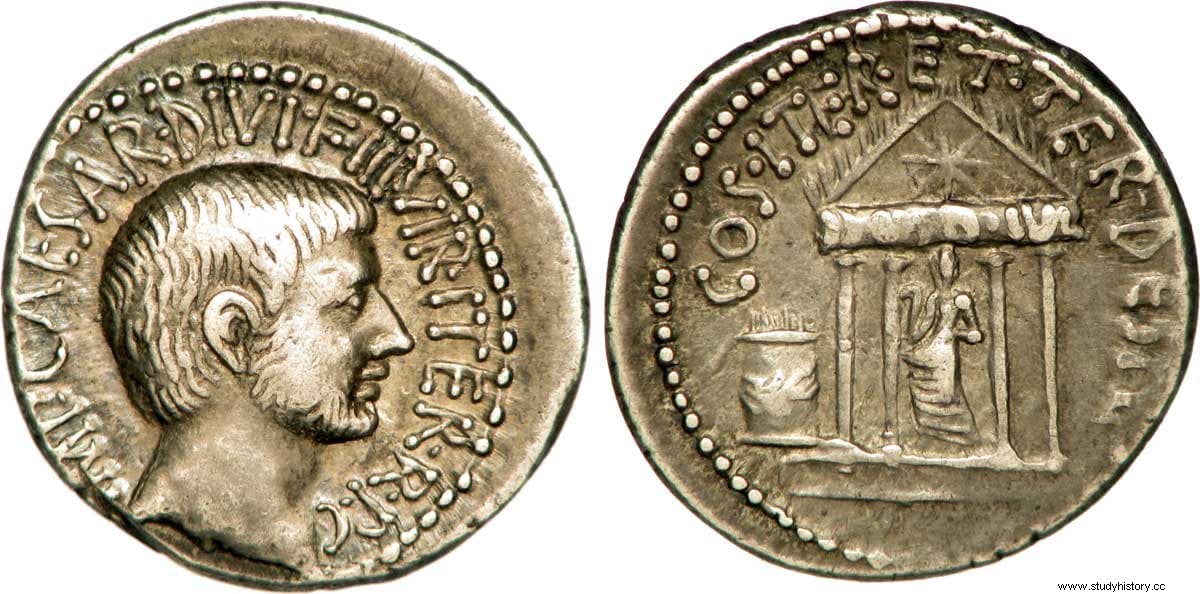On March 15, 44 B.C. Julius Caesar was assassinated at the hands of a group of senators, an event that marked a turning point in the history of Rome and that would ultimately lead to the rise of the Empire.
Four months later, between July 20 and 23, as was customary since Caesar himself established them in 46 BC, the Ludi Victoriae Caesaris festivities were being celebrated in Rome. . According to Suetonius, when the celebrations were beginning, around the eleventh hour, a comet appeared in the northeastern sky of Rome, which shone for seven successive days, and which was believed to be the very soul of Caesar.

The Romans interpreted the unusual phenomenon as a sign that Julius Caesar was being deified, that is, he had become a god, and the memory of him from generation to generation would make him the most famous comet in all of antiquity.>
It is not for less because recent studies indicate that it could have been the brightest diurnal comet in history, at least of which there is a historical record. Furthermore, it is one of only five known comets that have negative absolute light magnitude. Its absolute luminous magnitude is hypothesized to have been −3 (the apparent magnitude of the comet if it had been observed at a distance of 1 AU from both the Earth and the Sun). For comparison, if it had reached magnitude -4 it would have been as impressive as Venus itself.
And it is that not only the Roman sources account for it but also the Greek and Chinese. The latter, a report by the historian Ban Gu, record it as early as May 30, 44 B.C. at the time of its perihelion (closest approach to the sun), which was approximately 33 million kilometers (0.22 AU), as a large luminous tail in the sky.
As of June 10, its magnitude dimmed, first to +1 and then to +5 on July 20, when it suffered an explosion of magnitude 9. For this reason, in Rome it could be seen as an object more similar to a star, unlike Chinese observations.
Many ancient writers identified the comet as Sidus Iulium (Julian Star) or Caesaris astrum (Star of Caesar), since the poet Horace used that name in an ode written in 24 B.C. Virgil wrote that the star of Caesar has appeared to brighten the fields , and that the fearsome comets never burned so often , when he talks about the moments after César's assassination.
Augustus used the event for the benefit of his own political career, as a propaganda symbol. In the year 42 B.C. he would start the construction of a temple dedicated to Caesar, which became known as the temple of the comet and where a huge statue of Julius Caesar was erected who, as Suetonius and Ovid indicate, carried a flaming kite on his forehead.
In the year 77 AD Pliny the Elder wrote in his Natural History :

It is not known if Caesar's Comet still exists or if it disintegrated at some point in history, since its orbit was not periodic. Recent orbital calculations estimate that, if it were to continue to exist, the comet's parabolic orbit would place it today at more than 800 AU (astronomical units) from the Sun, that is about 119 billion kilometers. It would return to our Solar System approximately every 10,000 years. Its astronomical name is C/-43 K1.
Some researchers, such as Robert Gurval of the University of California, and Brian G. Marsden, of the Harvard Center for Astrophysics, believe that the existence of Caesar's comet, and therefore its appearance in 44 BC, are still a unresolved issue .
